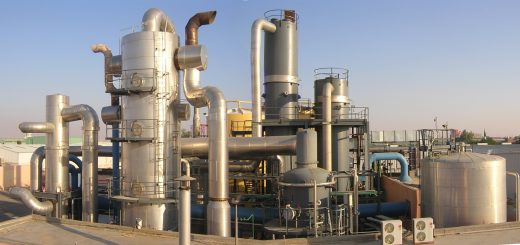Localization the Petrochemical Catalysts in Iran
The officials of the Iran Petrochemical industry have declared that “16 Catalyst groups out of 40 existing catalyst groups of petrochemical industry have been localized and commercialized in Iran and 9 other groups will be localized till the end of the current Persian year and the localization of the remained 15 catalyst groups will be actively followed up”. This is a important news considering that the Iran petrochemical industry is one of the biggest consumers of the catalysts in Iran by producing about 70 MMt of different products in 55 industrial complexes. A cost of $400MM have been estimated for purchasing the required catalysts of the Petrochemical and Refining industries in Iran and localization this market will bring a huge benefit (from the technical, employment and financial point of view) to the country. Now if we put into the consideration the forecasting of the National petrochemical Co. of Iran that 27 more petrochemical complexes will be added to the petrochemical portfolio of the country and increase the total production to the level of 100 MMT, the importance of localization the catalysts production will be more distinguished.
But to make the picture more clear I need to add some points as per the below:
As the Ziegler-Natta catalyst expert, I was in Bandar Imam Petrochemical Co. (BIPC) with my foreign colleagues In 1998 to re-start the HDPE plant. By devoting a lot of energy and time the plant was restarted and reached the steady level. simoultanously the BIPC was doing a very active reserach on Ziegler-Natta catalyst and pre-production of it on thsoe days and I remeber very well that a sinior managers of the BIPC was being pleased of the promising results of their own ZN catalyst told me that “Mr.Sahami, we hopefully will not buy anymore ZN catalysts and instead you have to sell our own catalyst”. of course the things didnot run as he stated and the BIPC catalyts have never been commercialized. But there are two questions here, what was the motive of the BIPC managers to produce their own catalyst and why did they fail?
1- The sanctions against the petrochemical and refining industries of Iran have been started by the beginning of the 1979 revolution of Iran and it is not a new thing. We have witnessed many limitations in supply of the required catalysts in the 1990s because of the political reasons (like UOP refused to supply the catalyst to Tabriz Petrochemical Co.) or economical intentions (like Mitsui refused to supply the catalyst to PP plant of BIPC PP plant which was licenced by Mitsui itself). but the sanctions have been intensified and expanded since 2009. it was very obvious in 2009 that the sanctions will be inculded soon the whole catalyst groups preventing the petrochemical and refining industries progress. So the fear of the cutting off the supply of the catalyst from the global producers and shutting down the Iranian petrochemical plants have been always the motive of localization the business of the catalysts.
2- The failure of the BIPC catalyst story was very simple. It will be far from the real world experience to commercialize the catalyst once you have only two PE plants (Tabriz Petrochemical was under the start up process on that time) and two PP plants in whole country. There is a significant difference between the demand and the effective demand. Effective demand means mass demanding, means the demands of 20 units of 300 kMT output not 2 units of 100 kMT. It could be exported if you supply (especially an important product like the catalyst) the product with appropriate and constant quality against a mass demand for a long time first, otherwise no petrochemical plant in the word will accept the risk of using the unknown catalyst. Further to all of this, there were still the global producers to supply the required catalysts so it was very normal that there was no demand for the BIPC own catalyst and consequently I lost the chance to become the sales man of the BIPC catalyst!
But things are changed. Unfortunately the global catalyst producsres made it clear that they can’t supply the required materials of the Iran petrochemical and refining sectors against the sanctions because of the fear of the US reaction. By 2009 this was a possibility for the industrial activists in Iran that the global catalyst producers may not supply in the sanctions era but once they left repeatedly the Iran market by 2010, 2013 and 2018 it was completely clear to everybody here that “They Don’t”. In the meantime the expansion of Iran petrochemical sector made a huge opportunity to deliver the effective demand. Nowadays 20 different polymers in 320 grades have been produced and supplied in Iran. The production level of the Polyethylene (different densities) in Iran is about 4.7 MMT.
At present 18 companies are active in catalyst production in Iran , not only in the petrochemical and refining sectors but in the industries of Steel, Edible Oil, Acid Sulphuric, etc. Methanol, Ammonia synthesis and reforming catalysts and the development of the industry of the precious metal recovery from the use catalysts are the current targets of the local producers.
Therefore it is normal to embrace optimistically the statements of the National Petrochemical Co officials and wait to see the localization of the whole required catalysts by the petrochemical and refining industries. Of course in case of lifting the sanctions and re-fix a new agreement with US, we have to wait for the changes in the market conditions that I will discuss it in next article.


Recent Comments